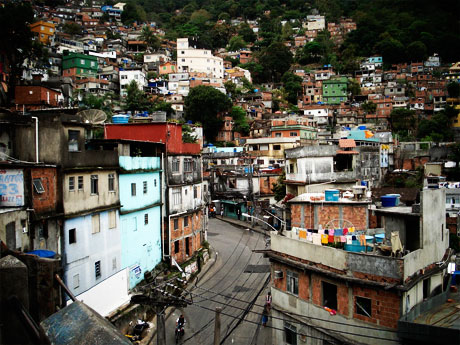- Australia and New Zealand
- East Asia and the Pacific
- Europe and Central Asia
- Albania
- Armenia
- Austria
- Azerbaijan
- Belarus
- Belgium
- Bosnia and Herzegovina
- Bulgaria
- Croatia
- Cyprus
- Czech Republic
- Denmark
- Estonia
- Finland
- France
- Georgia
- Germany
- Greece
- Hungary
- Iceland
- Ireland
- Italy
- Kazakhstan
- Kyrgyz Republic
- Latvia
- Liechtenstein
- Lithuania
- Luxembourg
- Malta
- Netherlands
- Norway
- Poland
- Portugal
- Romania
- Russian Federation
- Serbia
- Slovak Republic
- Slovenia
- Spain
- Sweden
- Switzerland
- Turkey
- Ukraine
- United Kingdom
- Uzbekistan
- Middle East and North Africa
- North America
- South Asia
- Sub-Saharan Africa
- Brazil Announces Minha Casa Minha Vida 3
- Brazil’s Housing Deficit Figures Show Improvement
- Government of Brazil Injects New Capital into CAIXA
- Brazil Increases Maximum Amortization Term
- Brazil Moves to Index "Poupança" Interest Rates on the SELIC Rate
- Brazil Expands Secondary Mortgage Market
- Brazil’s Caixa Issues First RMBS
Home > Countries > Latin America and the CaribbeanBrazil
Country Profile

Favela Rocinha, Brazil [http://www.exotictours.com.br/favela.htm]
Brazil's urban home ownership rate equated to 74.4 percent of households in 2008, of which 5.8 percent have a mortgage. In the same year, Brazil's residential debt to GDP ratio was 5 percent.Brazil has several unique features to its housing and mortgage market. The government collects Labor Tax Severance Fund (FGTS – Fundo de Garantia por Tempo de Serviço) and uses it for making loans for low- to middle-income housing at below market rates. CEF or Caixa, a public institution, is the dominant user of these FGTS funds, having a dual role of operating agent (as the FGTS Board) and as financial agent (to final borrowers).
Brazil also has a system of tax-free savings deposits in banks, known as SBPE (Sistema Brasileiro de Poupança e Empréstimo, the Brazilian savings and loan system). Banks are required to use part of these SBPE deposits for mortgage loans at a set rate over and a special inflation index.
These two systems (FGTS and SBPE) together form SFH, or Sistema Financeiro da Habitação, the Brazilian financial housing system. Both components have passed in the last few years through a steep expansion, due to better economic conditions and regulation improvements.
Brazil also has two instruments for the provision of housing loans: trust deeds and mortgages. The trust deed is the predominant instrument used and allows the bank to hold the deed and evict the homebuyer without going to foreclosure. The cost of collecting on a trust deed is much lower than collecting on a mortgage, and hence the interest rate on trust deeds is also lower than on mortgages.
Brazil has a limited securitization market, known as SFI (Sistema Financeiro Imobiliário, or real estate financial system). Two factors discourage the formation of a RMBS market, namely the SBPE funding which encourages banks to hold mortgages on their books in order to show that they comply with the SBPE rules, and the still-high interest rates available on government debt which discourages investment in other securities. Expansion is expected with the downtrend of interest rates and tax exemptions for investors.
In 2009 the Brazilian government launched the Million Houses Program (MCMW) under a stimulus package, which set ambitious goals for middle and low-income housing production. It contains provisions for developer and end-user finance and subsidies. The government also consolidated several low-income housing and urban upgrading programs under PAC (accelerated growth program, a large multisector infrastructure public investment program). A draft law, Moradia Digna, aims to dedicate a fixed 2 percent of the national budget per annum for housing, and is presently (May 2010) under analysis in Congress.
Developer finance, though considerably smaller, is provided by the main banks in particular for the construction of mid- to high-income housing. Brazil’s main developers are strongly capitalized through relatively recent and successful IPO’s.
Recent Updates
About the Editor
Contacto Consultores Associados (CAA)Contact
WebsiteContacto Consultores Associados (CAA) was created by professionals with a high level of technical training in the areas of Consulting, Appraisals, Expert Engineering, Construction Management and Project Coordination, with proven experience in Brazil and abroad, especially in various segments of the housing.
Copyright © 2025. HOFINET. By using or accessing this website, you signify that you agree to the Terms of Use.
When using or citing any information displayed on this website or accompanying blog sites, you must provide a reference to HOFINET.